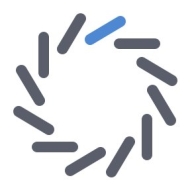

Databricks and Domino Data Science Platform are competing products aimed at enhancing data science capabilities for enterprises. Databricks has an edge in scalability and integration with big data ecosystems, while Domino excels in data science management features.
Features: Databricks offers a Spark-based platform, strong data processing capabilities, and automated machine learning. Domino provides complete model management, collaboration tools, and support for various data science workflows. Domino's focus on model lifecycle management provides an advantage for end-to-end projects.
Ease of Deployment and Customer Service: Databricks offers cloud-native deployment and strong customer support, focusing on integration challenges. Domino allows flexible deployment, including on-premises options, and offers personalized customer service for smooth transitions. Organizational needs will dictate the choice between scalability and tailored setup.
Pricing and ROI: Databricks uses variable pricing based on usage, which can lead to cost efficiency and high ROI for large-scale implementations. Domino, although potentially higher in initial cost, offers substantial ROI through operational efficiency in collaborative projects. Financial decisions depend on budget and expected returns from each platform's offerings.
| Product | Market Share (%) |
|---|---|
| Databricks | 13.9% |
| Domino Data Science Platform | 2.6% |
| Other | 83.5% |

| Company Size | Count |
|---|---|
| Small Business | 25 |
| Midsize Enterprise | 12 |
| Large Enterprise | 56 |
Databricks is utilized for advanced analytics, big data processing, machine learning models, ETL operations, data engineering, streaming analytics, and integrating multiple data sources.
Organizations leverage Databricks for predictive analysis, data pipelines, data science, and unifying data architectures. It is also used for consulting projects, financial reporting, and creating APIs. Industries like insurance, retail, manufacturing, and pharmaceuticals use Databricks for data management and analytics due to its user-friendly interface, built-in machine learning libraries, support for multiple programming languages, scalability, and fast processing.
What are the key features of Databricks?
What are the benefits or ROI to look for in Databricks reviews?
Databricks is implemented in insurance for risk analysis and claims processing; in retail for customer analytics and inventory management; in manufacturing for predictive maintenance and supply chain optimization; and in pharmaceuticals for drug discovery and patient data analysis. Users value its scalability, machine learning support, collaboration tools, and Delta Lake performance but seek improvements in visualization, pricing, and integration with BI tools.
Domino provides a central system of record that keeps track of all data science activity across an organization. Domino helps data scientists seamlessly orchestrate AWS hardware and software toolkits, increase flexibility and innovation, and maintain required IT controls and standards. Organizations can automatically keep track of all data, tools, experiments, results, discussion, and models, as well as dramatically scale data science investments and impact decision-making across divisions. The platform helps organizations work faster, deploy results sooner, scale rapidly, and reduce regulatory and operational risk.
We monitor all Data Science Platforms reviews to prevent fraudulent reviews and keep review quality high. We do not post reviews by company employees or direct competitors. We validate each review for authenticity via cross-reference with LinkedIn, and personal follow-up with the reviewer when necessary.